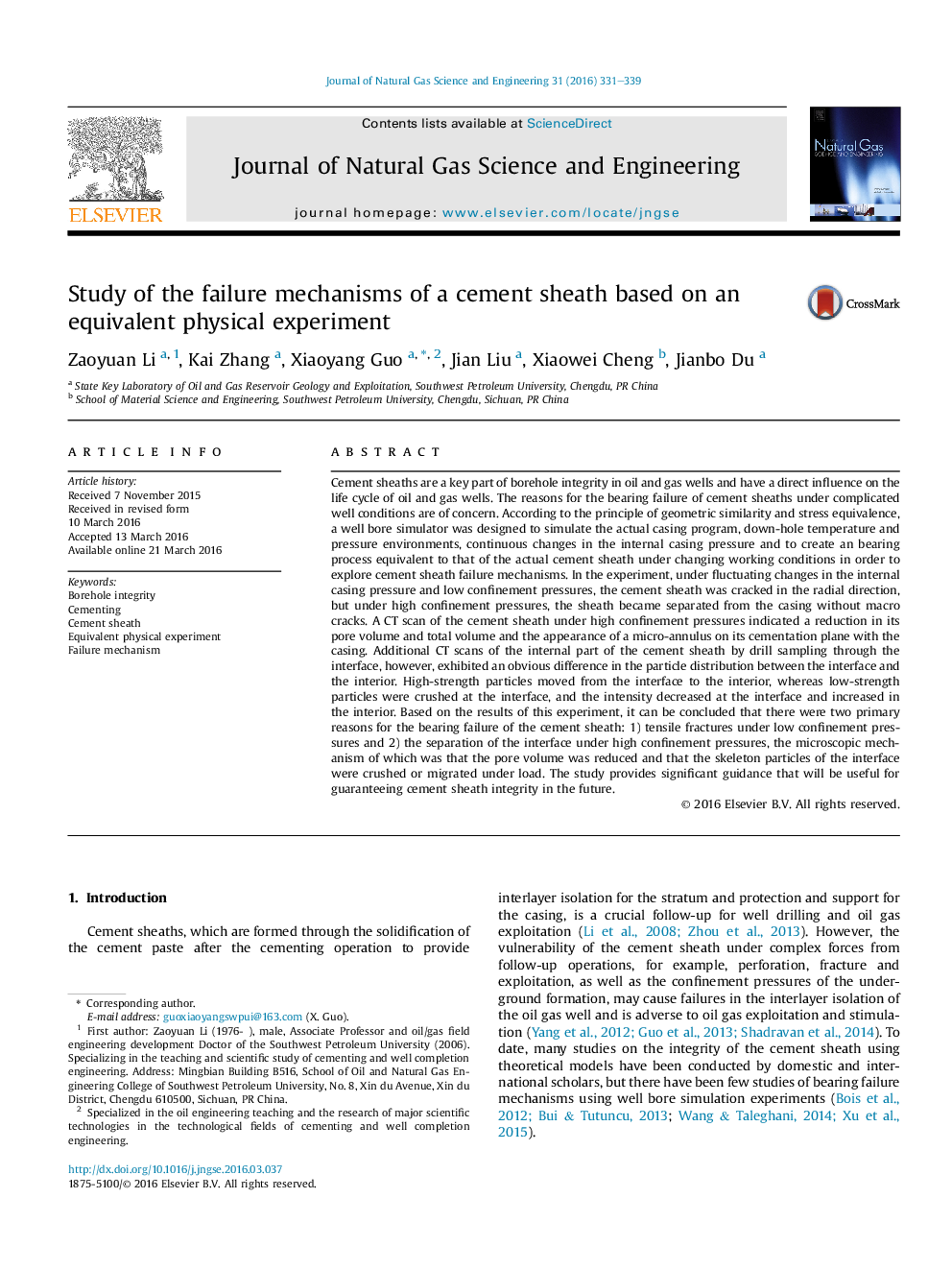| کد مقاله | کد نشریه | سال انتشار | مقاله انگلیسی | نسخه تمام متن |
|---|---|---|---|---|
| 8128933 | 1523010 | 2016 | 9 صفحه PDF | دانلود رایگان |
عنوان انگلیسی مقاله ISI
Study of the failure mechanisms of a cement sheath based on an equivalent physical experiment
ترجمه فارسی عنوان
بررسی مکانیسم شکست در یک غلاف سیمان بر اساس یک آزمایش فیزیکی معادل
دانلود مقاله + سفارش ترجمه
دانلود مقاله ISI انگلیسی
رایگان برای ایرانیان
کلمات کلیدی
یکپارچگی گودال، سیمان سازی، غلاف سیمان، آزمایش فیزیکی معادل، مکانیسم شکست
موضوعات مرتبط
مهندسی و علوم پایه
علوم زمین و سیارات
علوم زمین و سیاره ای (عمومی)
چکیده انگلیسی
Cement sheaths are a key part of borehole integrity in oil and gas wells and have a direct influence on the life cycle of oil and gas wells. The reasons for the bearing failure of cement sheaths under complicated well conditions are of concern. According to the principle of geometric similarity and stress equivalence, a well bore simulator was designed to simulate the actual casing program, down-hole temperature and pressure environments, continuous changes in the internal casing pressure and to create an bearing process equivalent to that of the actual cement sheath under changing working conditions in order to explore cement sheath failure mechanisms. In the experiment, under fluctuating changes in the internal casing pressure and low confinement pressures, the cement sheath was cracked in the radial direction, but under high confinement pressures, the sheath became separated from the casing without macro cracks. A CT scan of the cement sheath under high confinement pressures indicated a reduction in its pore volume and total volume and the appearance of a micro-annulus on its cementation plane with the casing. Additional CT scans of the internal part of the cement sheath by drill sampling through the interface, however, exhibited an obvious difference in the particle distribution between the interface and the interior. High-strength particles moved from the interface to the interior, whereas low-strength particles were crushed at the interface, and the intensity decreased at the interface and increased in the interior. Based on the results of this experiment, it can be concluded that there were two primary reasons for the bearing failure of the cement sheath: 1) tensile fractures under low confinement pressures and 2) the separation of the interface under high confinement pressures, the microscopic mechanism of which was that the pore volume was reduced and that the skeleton particles of the interface were crushed or migrated under load. The study provides significant guidance that will be useful for guaranteeing cement sheath integrity in the future.
ناشر
Database: Elsevier - ScienceDirect (ساینس دایرکت)
Journal: Journal of Natural Gas Science and Engineering - Volume 31, April 2016, Pages 331-339
Journal: Journal of Natural Gas Science and Engineering - Volume 31, April 2016, Pages 331-339
نویسندگان
Zaoyuan Li, Kai Zhang, Xiaoyang Guo, Jian Liu, Xiaowei Cheng, Jianbo Du,
